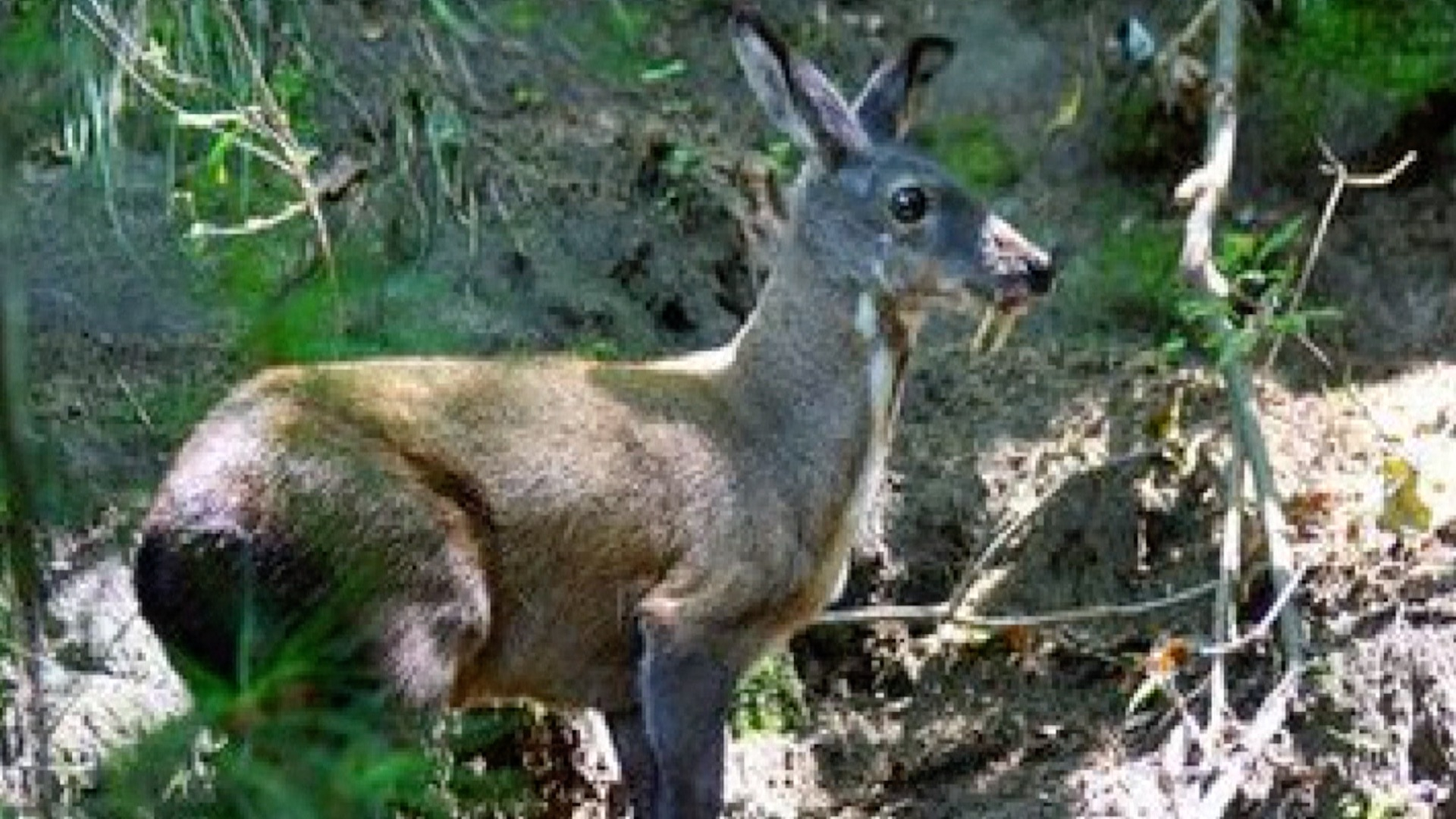
Nature
16:18, 03-Dec-2018
Endangered dwarf musk deer spotted in SW China mountains
Updated
15:20, 06-Dec-2018
CGTN
00:44

A critically endangered dwarf musk deer was recently captured on camera in the Gaoligong Mountain National Nature Reserve in southwest China's Yunnan Province.
The footage from October shows a small deer as large as an average-sized dog walking around and constantly looking back as if it were searching for something. It has long ears but no antlers, unlike other deer.

Two one-month-old dwarf musk deer. /VCG Photo
Two one-month-old dwarf musk deer. /VCG Photo
The dwarf musk deer, or Chinese forest musk deer, mainly lives in southern and central China and northern Vietnam. They were once widely distributed throughout China. The musk secreted by an adult male musk deer is widely used as an ingredient in traditional Asian medicine and perfume.
However, due to deforestation and poaching, its population has declined dramatically. Moreover, they are difficult to breed in captivity. The deer is now under first-class national protection and was listed as an endangered species by IUCN Red List in 2015. China has stopped the import of natural musk in an attempt to protect the deer.
"The footage of the animal we found in our nature reserve filled in the blank for image data of Chinese forest musk deer under natural living conditions," said Dong Yuhai, deputy director of Fugong administration and protection sub-branch of the Gaoligong Mountain National Nature Reserve.

A dwarf musk deer in a man's arms. /VCG Photo
A dwarf musk deer in a man's arms. /VCG Photo
Apart from the Chinese forest musk deer, infrared cameras captured footage of other rare animals, including the macaque, leopard cat, lesser panda, and black bear, which greatly contributes to scientific research and protection of endangered species in Gaoligong Mountain.
"We will continue to strengthen the protection of the nature reserve and consider the area a priority for monitoring. And we will strengthen the monitoring of endangered species and collect relevant information to provide a more scientific basis for learning about the number, distribution and living environment of wildlife in the region," said Dong.

SITEMAP
Copyright © 2018 CGTN. Beijing ICP prepared NO.16065310-3
Copyright © 2018 CGTN. Beijing ICP prepared NO.16065310-3